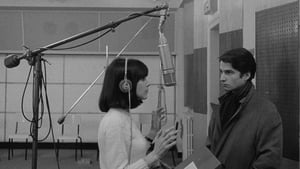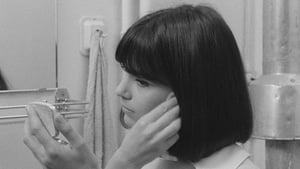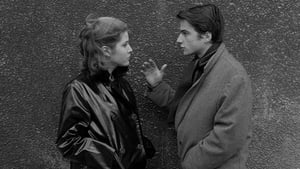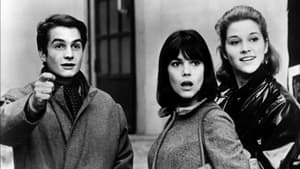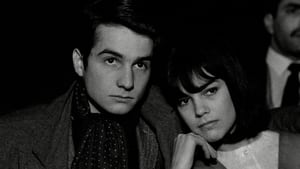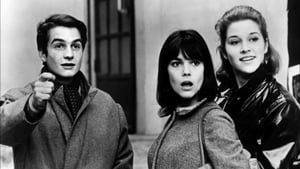Contact: [email protected]
Video Sources 0 Views
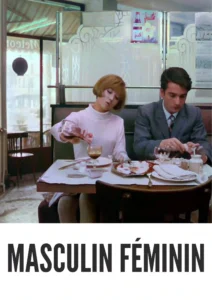
Synopsis
Masculin Féminin 1966: An Intimate Portrait of Youth, Love, and Rebellion

Introduction
In the vibrant landscape of French New Wave cinema, “Masculin Féminin 1966” shines as a bold and intimate exploration of youth, love, and rebellion. Directed by the visionary filmmaker Jean-Luc Godard, this groundbreaking work of art captures the spirit of its time with raw honesty and unflinching realism. As we delve into the captivating world of “Masculin Féminin,” we uncover the significance of its early colored films version and its enduring legacy in the annals of cinematic history.
Check The Full Colorized Movies List
Check Our Colorized Movies Trailer Channel
The Artistry of “Masculin Féminin”
Godard’s Revolutionary Vision
At the helm of “Masculin Féminin” is the iconic French director Jean-Luc Godard, whose innovative approach to filmmaking has left an indelible mark on the world of cinema. With its fragmented narrative, spontaneous performances, and provocative themes, the film defies traditional conventions to offer viewers a fresh and unfiltered glimpse into the lives of its characters. Godard’s keen eye for detail and uncompromising commitment to authenticity infuse every frame with a sense of urgency and immediacy, inviting audiences to immerse themselves in the tumultuous world of 1960s Paris.
Compelling Performances
Central to the film’s impact are the compelling performances of its ensemble cast, led by Jean-Pierre Léaud and Chantal Goya in the roles of Paul and Madeleine. Léaud’s portrayal of the brooding young intellectual Paul is a tour de force of emotional depth and vulnerability, capturing the angst and uncertainty of youth with remarkable authenticity. Opposite him, Goya shines as the enigmatic Madeleine, whose free-spirited charm and irreverent humor serve as a counterpoint to Paul’s introspective nature. Together, they form a dynamic duo whose passionate relationship lies at the heart of the film’s narrative.
Revisiting the Storytelling Mastery: Plot and Themes
An Intimate Portrait of Youth
“Masculin Féminin” unfolds as an intimate portrait of youth in revolt, following Paul and Madeleine as they navigate the complexities of love, politics, and identity in the turbulent landscape of 1960s Paris. Through a series of episodic vignettes and candid conversations, Godard captures the ephemeral nature of youth with sensitivity and insight, exploring the hopes, fears, and dreams of a generation on the brink of change.
Themes of Love and Rebellion
At the heart of “Masculin Féminin” are its themes of love and rebellion, which resonate throughout the film with profound emotional resonance. As Paul and Madeleine grapple with their own desires and disillusionments, they confront the societal norms and expectations that threaten to constrain their individuality and autonomy. Through their passionate relationship and ideological debates, Godard invites viewers to ponder the nature of love and freedom in a world defined by conformity and constraint.
The Dynamic Relationship Between Youth and Society
A Reflection of the Times
“Masculin Féminin” serves as a vivid reflection of the social and cultural upheaval of 1960s Paris, capturing the energy, excitement, and uncertainty of the era with remarkable authenticity. From the burgeoning student protests to the rise of countercultural movements, the film immerses viewers in a world of political activism, artistic experimentation, and social change, shedding light on the hopes and aspirations of a generation determined to challenge the status quo.
The Alienation of Modern Life
Against the backdrop of urban alienation and existential angst, Godard explores the disconnection and disillusionment that pervade the lives of his characters, highlighting the fragmented nature of modern existence. Through his use of fragmented narrative and elliptical editing, he captures the sense of dislocation and disorientation that defines life in the modern metropolis, inviting viewers to contemplate the profound alienation and isolation that lie at the heart of the human experience.
A Visual and Technical Achievement
Cinematic Poetry
Shot in luminous black-and-white, “Masculin Féminin” is a visual poem that captures the beauty and brutality of youth with breathtaking clarity and intensity. From its evocative street scenes to its intimate interiors, every frame is a work of art, meticulously composed and imbued with symbolic meaning. Godard’s use of light, shadow, and composition creates a hypnotic and immersive experience that transports viewers to the heart of 1960s Paris, inviting them to witness the joys and sorrows of a generation in flux.
Early Colored Films Version
In a departure from convention, the filmmakers behind “Masculin Féminin” experimented with an early colored films version of the movie, offering audiences a new perspective on its timeless tale. This innovative approach to colorization adds depth and nuance to the film’s visuals, enriching its already mesmerizing aesthetic and enhancing the overall viewing experience.
Behind the Scenes of “Masculin Féminin”
Godard’s Artistic Process
Behind the camera, Jean-Luc Godard and his team worked tirelessly to bring “Masculin Féminin” to life with authenticity and integrity. From the minimalist set designs to the evocative cinematography and haunting score, every aspect of the production was crafted with meticulous care and attention to detail. Godard’s uncompromising commitment to his artistic vision shines through in every frame, as he pushes the boundaries of cinematic expression to create a work of unparalleled beauty and emotional resonance.
Collaborative Creativity
One of the most remarkable aspects of “Masculin Féminin” is the collaborative spirit that infused every aspect of its creation. From the dedicated performances of the cast to the innovative contributions of the production crew, each member of the team played a vital role in bringing Godard’s vision to life. Through their collective efforts, they created a cinematic masterpiece that continues to inspire and captivate audiences around the world.
Legacy and Influence on Cinema
Critical Acclaim and Cultural Impact
Upon its release, “Masculin Féminin” received widespread critical acclaim, with particular praise for its innovative storytelling, raw performances, and evocative visuals. Over the years, the film has attained legendary status among cinephiles and scholars alike, inspiring countless filmmakers to explore the complexities of youth, love, and rebellion with honesty and authenticity.
Inspiring Future Generations
“Masculin Féminin” has left an indelible mark on the world of cinema, inspiring filmmakers and audiences alike to contemplate the timeless themes of love, identity, and social change. Its enduring legacy serves as a testament to the enduring power of cinema to capture the spirit of its time and provoke thought, reflection, and introspection.
Where to Watch “Masculin Féminin 1966 Full Movie”?
For those eager to experience the raw beauty of “Masculin Féminin” in its entirety, the film is readily available on various streaming platforms and home video releases. Whether you’re a seasoned cinephile or a newcomer to the world of French New Wave cinema, “Masculin Féminin” promises a journey unlike any other—a journey into the heart of youth, love, and rebellion.
In Conclusion
“Masculin Féminin 1966” stands as a timeless testament to the power of cinema to capture the hopes, fears, and dreams of a generation in flux. With its raw honesty, provocative themes, and mesmerizing performances, the film continues to resonate with audiences around the world, inviting them to contemplate the complexities of youth, love, and rebellion with empathy, compassion, and understanding. As we revisit this cinematic masterpiece, let us embrace its invitation to explore the depths of human experience and the enduring quest for meaning, connection, and self-discovery.

